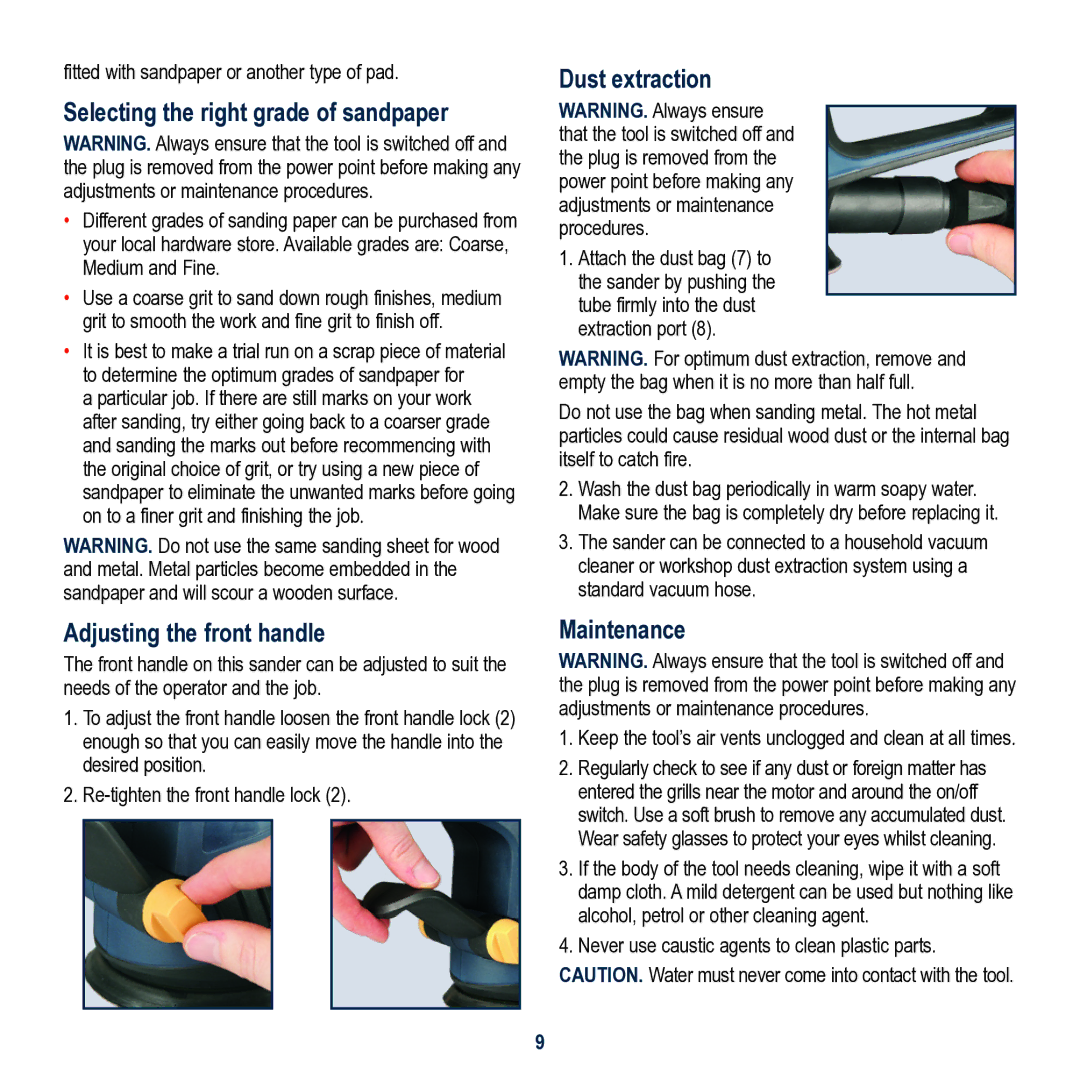
fitted with sandpaper or another type of pad.
Selecting the right grade of sandpaper
WARNING. Always ensure that the tool is switched off and the plug is removed from the power point before making any adjustments or maintenance procedures.
•Different grades of sanding paper can be purchased from your local hardware store. Available grades are: Coarse, Medium and Fine.
•Use a coarse grit to sand down rough finishes, medium grit to smooth the work and fine grit to finish off.
•It is best to make a trial run on a scrap piece of material to determine the optimum grades of sandpaper for
a particular job. If there are still marks on your work after sanding, try either going back to a coarser grade and sanding the marks out before recommencing with the original choice of grit, or try using a new piece of sandpaper to eliminate the unwanted marks before going on to a finer grit and finishing the job.
WARNING. Do not use the same sanding sheet for wood and metal. Metal particles become embedded in the sandpaper and will scour a wooden surface.
Adjusting the front handle
The front handle on this sander can be adjusted to suit the needs of the operator and the job.
1.To adjust the front handle loosen the front handle lock (2) enough so that you can easily move the handle into the desired position.
2.
Dust extraction
WARNING. Always ensure that the tool is switched off and the plug is removed from the power point before making any adjustments or maintenance procedures.
1.Attach the dust bag (7) to the sander by pushing the tube firmly into the dust extraction port (8).
WARNING. For optimum dust extraction, remove and empty the bag when it is no more than half full.
Do not use the bag when sanding metal. The hot metal particles could cause residual wood dust or the internal bag itself to catch fire.
2.Wash the dust bag periodically in warm soapy water. Make sure the bag is completely dry before replacing it.
3.The sander can be connected to a household vacuum cleaner or workshop dust extraction system using a standard vacuum hose.
Maintenance
WARNING. Always ensure that the tool is switched off and the plug is removed from the power point before making any adjustments or maintenance procedures.
1.Keep the tool’s air vents unclogged and clean at all times.
2.Regularly check to see if any dust or foreign matter has entered the grills near the motor and around the on/off switch. Use a soft brush to remove any accumulated dust. Wear safety glasses to protect your eyes whilst cleaning.
3.If the body of the tool needs cleaning, wipe it with a soft damp cloth. A mild detergent can be used but nothing like alcohol, petrol or other cleaning agent.
4.Never use caustic agents to clean plastic parts. CAUTION. Water must never come into contact with the tool.
9
